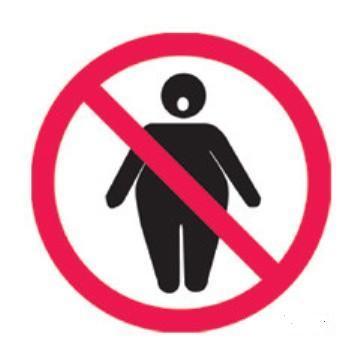Are some people more susceptible to food addiction than others? Are some foods more addictive than others? After all, increased availability of high-fat and high-sugar foods only partly explains the high incidence of obesity around the world. Why are some people obese, while others remain at healthy weights? The answer appears to have something to do with at what age we consume the “addictive” food. Food addiction, it seems, appears to be tied to critical periods in youth.
One study examined babies at 1 month old and again at 6 months old. The infants were fed breast milk, consumed less than 8 ounces of formula a week, and had no solid foods, according to their mothers. At each examination, researchers took breast milk samples from each mother and scanned them for sugars such as lactose, glucose, and fructose. They also measured each baby’s fat, muscle, and bone mass.
The researchers found that just 10 milligrams (about the weight of a grain of rice) of fructose from breast milk caused adverse changes in the baby’s body composition during growth. Babies exposed to fructose had a 5 to 10 percent increase in body weight and body fat at six months of age. Ingestion of fructose predisposes a child for obesity, triggering pre-fat storage cells to become fat cells, raising the baby’s risk of one day becoming overweight or obese (Goran, Martin, Alderete, Fujiwara & Fields, 2017).
Interestingly, bioscience studies show this effect is amplified when mothers eat junk food later in their pregnancy. Eating high-fat, high sugar, processed foods early in the pregnancy does not have the same detrimental effect (Gugusheff, Ong & Muhlhausler, 2015). This means that women have time to adjust their diet when they discover their pregnancy.
Fructose is not a natural component of breast milk. Exposing infants and children to high amounts of sugar during development can produce problems with cognitive development and learning. It can also create a lifelong risk for obesity, diabetes, fatty liver disease, and heart disease. Unfortunately, fructose is found in many processed foods and drinks – including cappuccinos, energy drinks, and juice cocktails (Goran et al., 2017).
Another study found a critical developmental challenge in adolescence.
Adolescence is a time when the brain and its reward centers grow the fastest. If the child’s reward system has become desensitized due to an overexposure to high-fat and high-sugar foods in utero, when the child hits adolescence they need more sugar and more fat to feel as good as they did when younger.
Bioscience research shows that the central reward pathways, particularly the opioid and dopamine systems, set up an increased preference for junk foods (food addiction?). The developmental window in adolescence is gender related. Their study shows that males can reverse the unhealthy effects of junk food in adolescence by eating a healthy diet. Females, however, do not show this effect (Gugusheff, Ong & Muhlhausler, 2015).
This article is an excerpt from the online continuing education (CE) course:
Childhood Obesity: The Clinician’s Toolbox is a 3-hour online continuing education (CE/CEU) course that explores the epidemic of childhood obesity and how clinicians can help combat it.
- CE Credit: 3 Hours
- Target Audience: Psychologists | Counselors | Social Workers | Occupational Therapists (OTs) | Marriage & Family Therapists (MFTs) | Nutritionists & Dietitians | School Psychologists | Teachers
- Learning Level: Introductory
- Course Type: Online
This course will start by examining the ways in which certain foods alter a child’s metabolism, setting them on a course of weight gain, metabolic inefficiency, and obesity. We will also review how obesity affects children’s self-perception and sense of identity in ways that predispose them for a lifelong battle with weight.
We will then see what can be done to shift the balance in children’s favor. We will first explore how changing a child’s physical weight begins with changing their image of that weight – more specifically, their self-image. We will consider ways to combat food marketers and interrupt the cycle that hooks children on unhealthy foods. We will also examine metabolic strategies and exercise that will not only effectively “prime the metabolic pump,” but also strengthen children’s sense of self, self-control, and confidence – factors associated with healthy weight.
The Clinician’s Toolbox will provide strategies to address and prevent childhood obesity, including evidence-based recommendations from the American Academy of Pediatrics and the World Health Organization. Specific step-by-step activities for children and parents, as well as an overview of motivational interviewing, will give clinicians specific strategies to use in their practice. Book and website resources are provided at the end of the course for further study and use. Course 31-29 | 2021 | 58 pages | 20 posttest questions
Professional Development Resources is approved by the American Psychological Association (APA) to sponsor continuing education for psychologists. Professional Development Resources maintains responsibility for this program and its content. Professional Development Resources is also approved by the National Board of Certified Counselors (NBCC ACEP #5590); the Association of Social Work Boards (ASWB Provider #1046, ACE Program); the Continuing Education Board of the American Speech-Language-Hearing Association (ASHA Provider #AAUM); the American Occupational Therapy Association (AOTA Provider #3159); the Commission on Dietetic Registration (CDR Provider #PR001); the Alabama State Board of Occupational Therapy; the Arizona Board of Occupational Therapy Examiners; the Florida Boards of Social Work, Mental Health Counseling and Marriage and Family Therapy (#BAP346), Psychology & School Psychology (#50-1635), Dietetics & Nutrition (#50-1635), and Occupational Therapy Practice (#34); the Georgia State Board of Occupational Therapy; the New York State Education Department’s State Board for Mental Health Practitioners as an approved provider of continuing education for licensed mental health counselors (#MHC-0135); the Ohio Counselor, Social Worker & MFT Board (#RCST100501); the South Carolina Board of Professional Counselors & MFTs (#193); the Texas Board of Examiners of Marriage & Family Therapists (#114) and State Board of Social Worker Examiners (#5678); and is CE Broker compliant (all courses are reported within a few days of completion).
Enjoy 20% off all online continuing education (CE/CEU) courses @pdresources.org! Click here for details.









